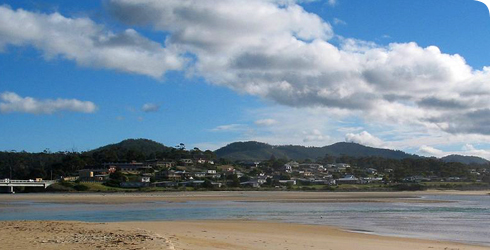Conservation
Conservation status
Onychophora as a group are cited by the International Union for the Conservation of Nature (IUCN) as being ‘vulnerable’ in a global context.
Since 1995 giant velvet worms have been listed as rare under the Tasmanian Threatened Species Protection Act due to their endemism within a restricted distribution range over largely unprotected areas, occurrence at low population densities and their sensitivity to forestry practices occurring within their range. They are now regarded as highly as mammals and birds in terms of conservation priority.
Threats
While the range of the giant velvet worm remains largely unfragmented and contains a number of protected areas, the majority of the area is used for production forestry.
The most damaging forestry activity is the conversion of native forest into plantations of exotic species such as pine, though this is a relatively small use of the land within this area.
The most frequent forestry activity within the range of the giant velvet worm is clearfell followed by controlled burning to encourage regeneration of eucalyptus seedlings and reduce harvesting residues which could pose serious long-term fire risks.
Giant velvet worms have evolved within a system where fire is present naturally, but the difference in forest management processes compared with natural cycles within native forest could lead to long term damage to the giant velvet worm population. As managed forest is felled when the trees are relatively young and small, the remaining logs are smaller which provides a less than ideal habitat compared with larger logs.
-
Management and procedures
Read about the practices and procedures in place to prevent damage to the giant velvet worm and its habitat.
